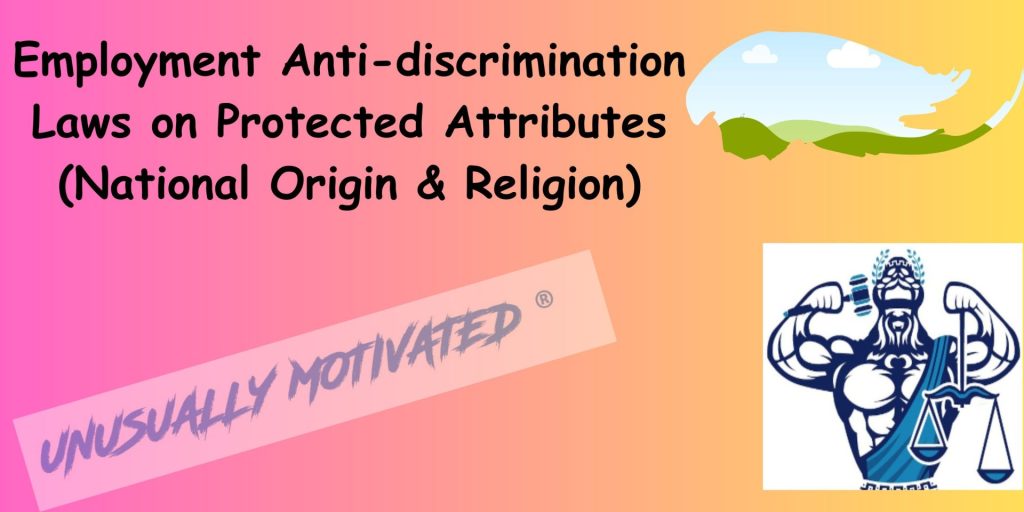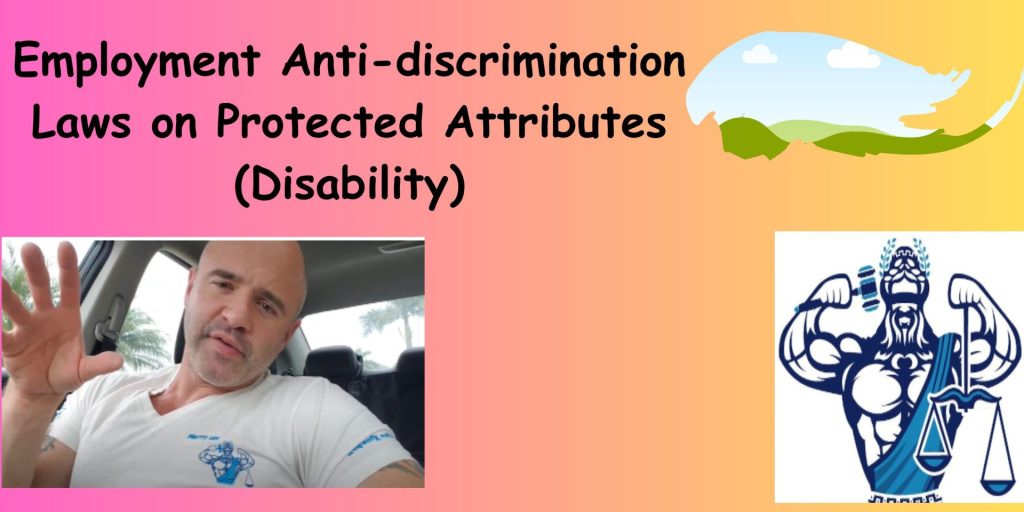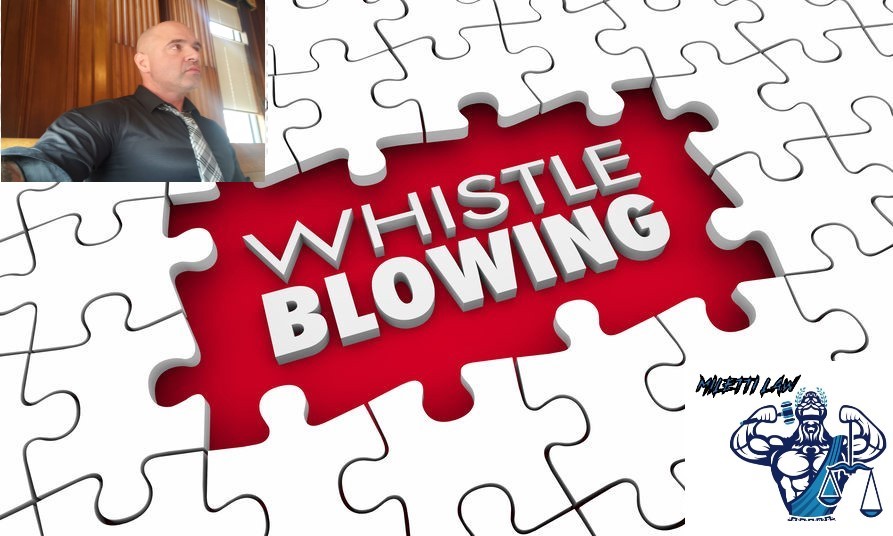Here at Miletti Law®, it’s our commitment to continue publishing blogs and making videos that aim to keep you, our unusually motivated® readers, #InTheKnow about diverse legal and non-legal issues that affect you or your businesses. Usually, the content is featured as videos, that are posted on our YouTube Channel at https://www.youtube.com/channel/UCtvUryqkkMAJLwrLu2BBt6w and blogs that are published on our website WWW.MILETTILAW.COM. We highly encourage you to subscribe to the channel and sign up for the Newsletter on the website to receive updates firsthand.
This blog is Part II of our brand new series in which we dissect a Disability Discrimination Claim. In Part I, we formed and developed our discussion based on the desperate situation that nurses have been going through for refusing to take the COVID-19 jab and, accordingly, hammered on several issues that allowed us to set the context in which a pregnancy can be considered a disability. We also promised that in Part II of the series, we would provide you with a hands-on guide on how to analyze policies/issues that often give rise to a disability discrimination claim. Please, make sure that you check our video and get it hot and directly from the horse’s mouth!
As an update that will help us to move the discussion forward and as a way of keeping our word, we’ve prepared for you a video titled “The Anatomy Of A Disability Discrimination Case, Part II.” You can access it through the link provided at the end of this blog. In Part I, we mentioned that following the COVID-19 vaccine mandates, nurses have been thrown into dilemma because their employers require them to get the jab and if they refuse, it would be presumed that they have voluntarily resigned from their jobs.
Following our example of “pregnancy” as a disability, it’s crucial to recall the specific New York-based laws and statutes under which pregnancy issues are covered. These include:
- § 296 (Executive Law § 296) of the New York State Human Rights Law (NYSHRL), Executive Law § 290 et seq.,
- Title VII cases under the Federal Civil Rights Act of 1964, 42 U.S.C.S. § 2000e-2(a)(1).
- The NYSHRL provides the same protections, as does the Federal Pregnancy Discrimination Act of 1978 (PDA).
- The PDA has been enacted as an amendment to Title VII of the Civil Rights Act of 1964 (Title VII) to clarify that pregnancy discrimination is a form of gender discrimination, prohibited by Title VII. 42 U.S.C.S. § 2000e(k).
- An employment practice is unlawful in contravention of the PDA when pregnancy is a motivating factor for an adverse employment action
Accordingly, in order to have solid disability discrimination claim, as highlighted in Part I of the series, you’ll require four elements/items under what we called “prima facie.” As a recap, these elements included:
- The plaintiff, the person who’s bringing the complaint, must show that they are a member of a protected class (meaning that they are disabled);
- The plaintiff must show that they are qualified to hold that position (for instance, they were a Registered Nurse for about 10 years);
- The plaintiff must show that they were terminated from employment or suffered some kind of adverse effect following the termination;
- The plaintiff must show that the discharge right of adverse action occurred on the circumstances giving rise to the discrimination.
Following the last element, you should be able to tie the adverse reaction you suffered was the direct result or outcome of the incident of discrimination that your employer allegedly made you to go through. This implies that analyzing the policies that often give rise to a disability claim entails bridging this gap. Under the law, this is possible in one of three ways that include direct discrimination, indirect discrimination, and based on the concept of disparate impact.
Direct Discrimination
Just as the word suggests, the focus of direct discrimination entails discriminatory conduct and direct submissions. Under this provision, you may present evidence to demonstrate that the adverse action was a result of intentional discrimination. It can also be demonstrated by showing evidence of intentional discrimination or circumstantial discrimination. While intentional discrimination requires an acknowledgment by an employer of discriminatory intent, circumstantial evidence of discrimination includes ambiguous statements, suspicious timing, instances in which similarly situated, non-pregnant employees received systematically better treatment.
Indirect Discrimination
Sometimes, cases lack direct evidence of discriminatory conduct as it is under direct discrimination. In such a case, the McDonnell Douglas Framework, which was essentially derived following a Supreme Court case, is applied. Off the bat, you can think of it as a technical way of playing volleyball with the employment law. In a case scenario, the plaintiff (such as a nurse from our example, who gets to the court to play volleyball. However, in order to have a solid game, the plaintiff is required to present a “prima facie” case, which means that they need to meet all the requirements based on the four elements discussed earlier.
Having done that, they get the volleyball and send it over to the employer, who is expected to hit it back. However, to do that, the employer is expected to articulate some specific legitimate non-discriminatory reason explaining why the plaintiff suffered the alleged adverse reaction. After the ball falls on their side, it’s time for the plaintiff to send it back and tell the employer that their response was something like merely a pretext for behavior that’s actually motivated by discrimination.
These kinds of give and take responses prod the question whether the alleged behavior can be classified as direct or indirect discrimination or discriminatory intent, circumstantial evidence of discrimination (such as ambiguous statements, suspicious timing, and instances in which you received poor treatment as compared to similarly situated, non-disabled employees).
Disparate Impact
While it’s often regarded as unintentional discrimination, disparate impact is a form of discrimination that takes place when practices or policies that seem to be “facially neutral” (i.e. neutral on the face—neutral based on the text of the policy] end up causing a disproportionate impact on a class of individuals or a protected group such as women with high-risk pregnancies. This means that although it may seem facially neutral, a policy or regulation in a workplace can result, in itself, in a disparity that only affects certain individuals.
As such, the volleyball moves back and forth, from the employee to the employer and vice versa. Assuming that a disparate impact is established, the employer could give a business-related reason why a given policy had to take effect and why there was no alternative in accordance with a particular government directive or something of the sort.
In a nutshell, the most significant takeaway here regards how to illustrate, beyond any doubt, the connection in element number four, which supports the idea that the adverse reaction you suffered was the direct result of the incident of discrimination that your employer allegedly made you go through. To do this, you need to who where it was a case of direct discrimination, indirect discrimination, or disparate impact.
We invite you to review our video at https://www.youtube.com/watch?v=L9yp1AqK02Q
Stay tuned for Part III of this series. Until then, stay tuned for other videos and blogs on other interesting and educative topics. In the interim, reach out to us with questions or comments at the Contact Us page!
 Professional Legal & Business Services And Representation - English & Espanol!
Professional Legal & Business Services And Representation - English & Espanol!

 314-648-2586
314-648-2586 CALL US NOW
CALL US NOW








